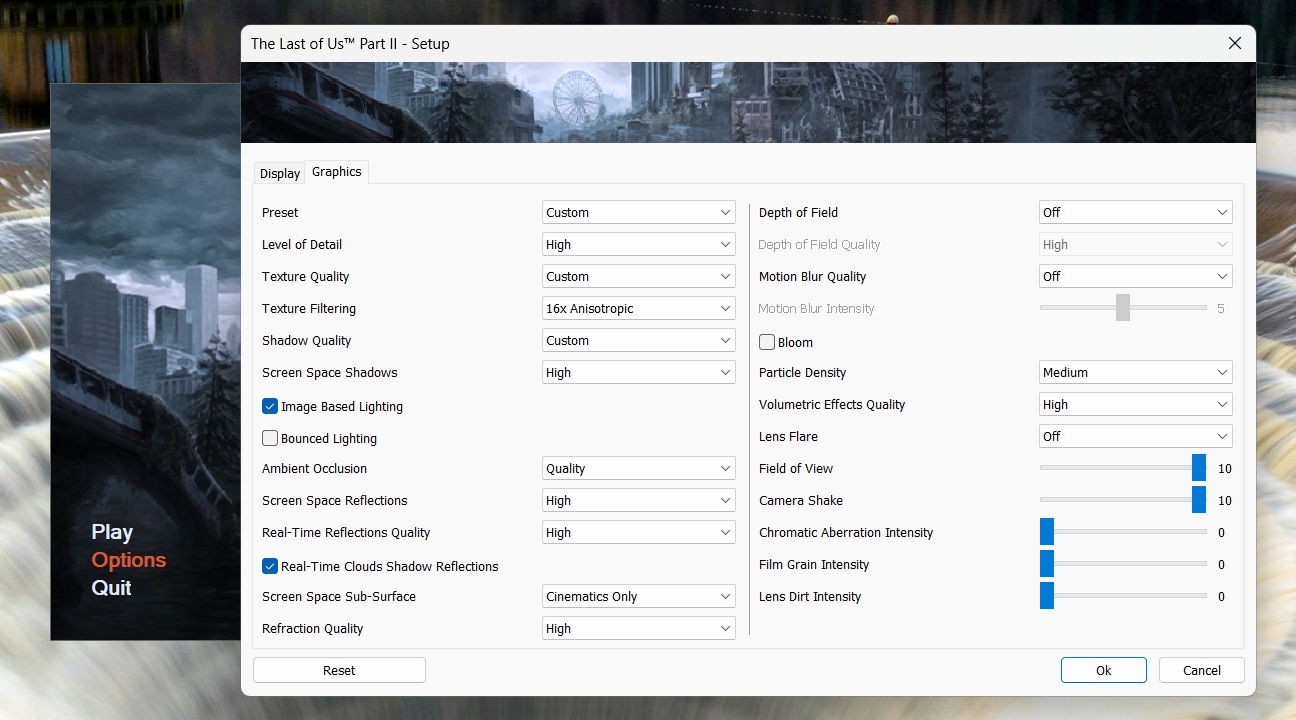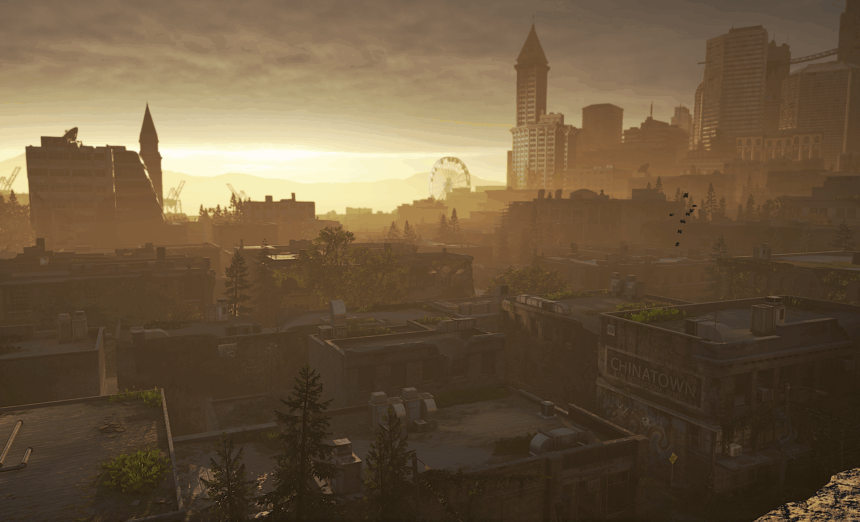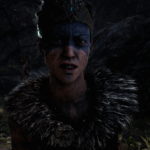The remastered version of The Last of Us Part II has been one of the main games that I’ve played since it came out, but one of the worst when it comes to performance.
The game constantly lagged, and it crashed multiple times during my gameplay, which drove me to change, test, and find the best and most optimal settings.
Those settings have been tested with the NVIDIA GeForce RTX 2060 (12GB of VRAM) and Intel Core i5 5600K – which is not the ideal hardware for a hardcore gamer, but good enough to run most games in my 4K ultrawide monitor.

Best Graphics Settings
The same settings will work fine for users with 8GB of VRAM, but if you have anything lower than that, change some of the ‘High’ to ‘Medium’:
| Settings | Set to: |
|---|---|
| Dynamic Objects Level Of Detail: | High |
| Characters Level of Detail: | High |
| Environments Level Of Detail: | Medium or High |
| Dynamic Objects Texture Quality: | Medium |
| Characters Texture Quality: | Medium |
| Environments Texture Quality: | High |
| Visual Effects Quality: | Medium or High |
| Texture Filtering: | 16x |
| Spotlights Shadow Resolution: | High or Very High |
| Point Lights Shadow Resolution: | High or Very High |
| Ambient Shadows: | High or Very High |
| Directional Shadow Resolution: | High or Very High |
| Directional Shadow Distance: | Medium |
| Screen Space Shadows Quality: | High |
| Dynamic Screen Space Shadows: | On |
| Contact Shadow Quality: | High |
| Image Based Lighting: | On |
| Bounced Lighting: | On |
| Ambient Occlusion: | Quality |
| Screen Space Reflections: | High |
| Real-Time Reflections Quality: | High |
| Real-Time Cloud Shadow Reflections: | On |
| Screen Space Sub-surface Scattering: | On |
| Refraction Quality: | High |
| Particle Density: | Medium |
| Volumetric Effects Quality: | High |
| Depth of Field: | Off |
| Motion Blur: | Off |
| Lens Flare: | Off |
| Film Grain: | 0 / Off |
The settings provided above will immediately increase your FPS while keeping the stunning environments and graphics to a point where there’s not much difference even if you’ve had them set in ‘Very High’.
Best Display Settings
Be aware: For NVIDIA users, the NVIDIA Reflex Low Latency should be on with Boost (if it’s available), while for AMD users, the AMD Anti-Lag 2 should be enabled. Based on your graphics card, only one of those two options will be available to select.
| Settings | Set to: |
|---|---|
| Window Mode: | Exclusive Fullscreen |
| Cinematic Pillarboxes: | On |
| Upscale Method: | DLSS |
| Upscale Quality: | Dynamic |
| Upscale Sharpness: | 5 |
| Anti-Aliasign Mode: | DLAA |
| NVIDIA Reflex Low Latency: | On with Boost for NVIDIA users |
| AMD Anti-Lag 2: | On for AMD users |
| Frame Generation: | FSR Frame Generation |
| Dynamic Resolution Scaling: | Set to Maximum |
| Refresh Rate: | Set to Maximum |
| Framerate Cap: | The same as the Refresh Rate |
| VSync: | On |
For some users, the settings above may look a bit different based on their monitors and graphics cards. For example, my monitor supports a 144 Hz refresh rate; if yours supports more, just add it to the maximum for smoother gameplay.
If you have older hardware and the game is unable to even load into settings, you can actually change all those settings from The Last of Us Part II “Setup” window, which opens up each time you’re trying to launch the game.

Once you’ve changed the settings, please restart the game.
For me, those settings also fixed the weird problem with the character’s hair, and they do not have as much noise as they did before.
Have you played The Last of Us Part II? And if so, how was the performance, and which graphics cards did you use to play it? Have you experienced any other issues with the graphics? Let me know in the comments down below.
If you’re experiencing any other issues with the game, head over to our Forum, submit your ticket, and we’ll do our best to help you.











